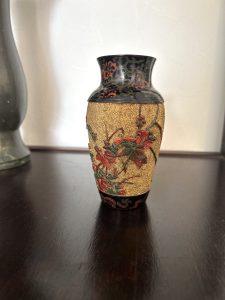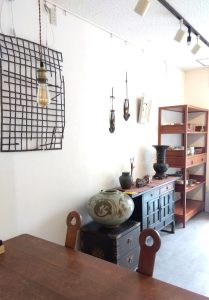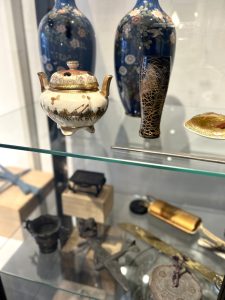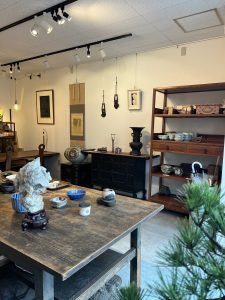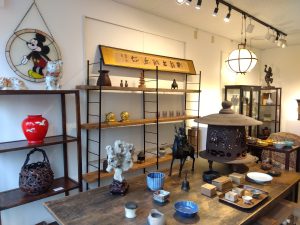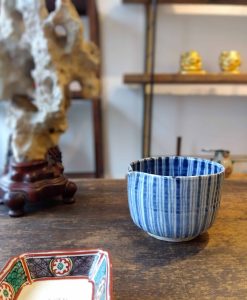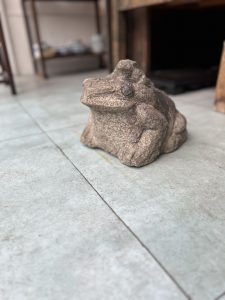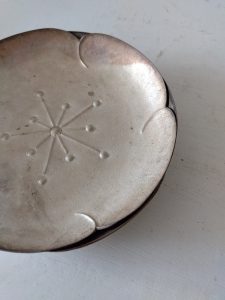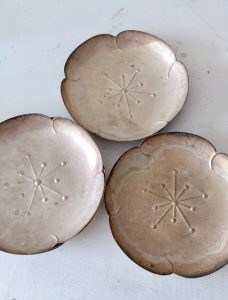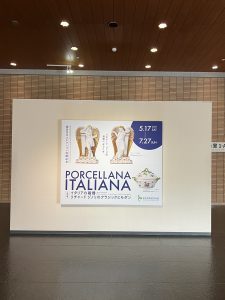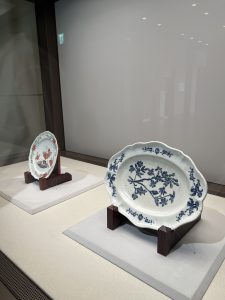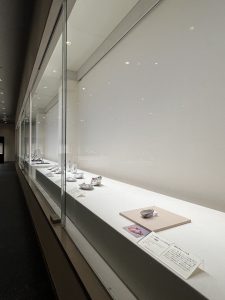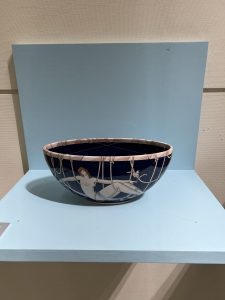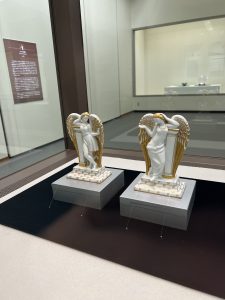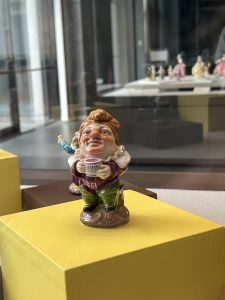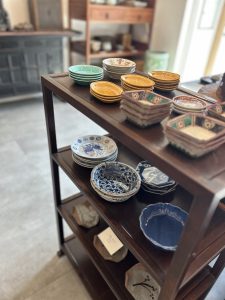確かに、昭和レトロ流行ってますね。(愛知県名古屋市千種区姫池通 骨董買取 古美術風光舎)
2025.06.14
先日のスタッフHのアンサーブログになってしまうのですが、たしかにこのところ昭和レトロが各方面流行っていますよね。
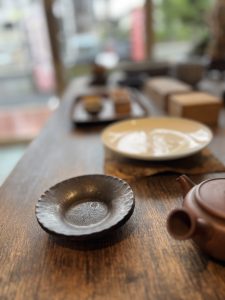
仕事がら買取などでお伺するお宅でも昭和世代のレコードなどの買取のご相談もあり(弊店、レコードなどの買取も承っております。)当時流行ったアーティストの話で盛り上がることもあったりするのですが、昭和世代の自分にとっては「レトロといわれても…。いや、確かにレトロか…笑」などと思わざる負えない自分もドストライク昭和世代であります。
自分自身も昭和レトロになっていて、先日も健康診断や各種検査をこなしその結果に一喜一憂をしていたり、時間とはなんて残酷なんでしょう。
そんな昭和レトロのブーム、今、昭和歌謡が若い世代にけっこう刺さっているようですよね。
このところ昭和歌謡と令和の今はやっている曲をいろいろ混ぜて、様々な世代でも楽しめるようにしている番組をよく観るのですが、ゲストが令和世代と昭和世代だったりして「自分はあっち側だな笑」と、はい、認めます。
そんな昭和歌謡なんですが、昭和世代が楽しむかと思いきや、実は令和世代もその曲や当時のファションなどなど楽しんでいるようですね。あのキャッチーでコッテリした感じの曲(言い方)が、刺さっているようでちょっとびっくりでして、昭和世代にとっては「え、そこ?」と言いたいところなのですが、逆にそこが新鮮なのでしょうね。
というわけで、先日懐かしく昭和歌謡なるものを聴いていたのですが、今でも松田聖子さんの曲を恐ろしいことに全部振り付きで歌えるわけですよ…。これが昭和歌謡の底力か。みんなTVの前に張り付き、同じ流行りの曲を聴き、同じように曲や振りを覚えていた記憶がよみがえります。それはそれで楽しかったですけどね。
時が流れて令和ともなりますとアーティストも多いですし、曲の作り方も様々、TVのみならず配信など世に送り出すツールも様々になり、好きなアーティスや曲をどんどん選ぶことができるようになってきて、選ぶのは大変だけど選択肢も多種多様。サブスクなどで知らないアーティストや曲にすぐに巡り合えるのは昭和世代でもそれはそれで楽しいですし、そんな選択肢の一つとしての昭和歌謡なのでしょうね。
そんな昭和歌謡を聴いている若い人に、当時のリアルな様子などを話せることだけはちょっと優越感ではありますが、レトロになった昭和歌謡とレトロになった自分自身に少々驚く今日この頃であります。
それではごきげんよう。(スタッフY)
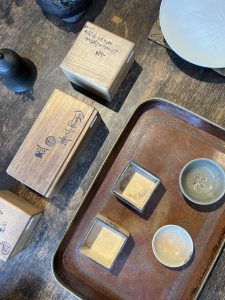
This may be an answer blog to the one written by Staff H the other day, but it is true that Showa-era retro music has been popular in various fields recently.
We sometimes have discussions about the artists who were popular in those days, but for me, a member of the Showa generation, it is hard not to think “retro…” or “retro is definitely retro…” lol. I am also a member of the Showa generation, and I can’t help but think, “No, it’s definitely retro…lol. I myself have become a Showa-retro, and the other day, I was feeling happy and sad about the results of my medical checkups and various tests I had to go through.
I was happy and sad about the results of my medical checkups and various tests the other day.
Recently, I often watch programs that mix Showa songs with current songs from the Showa and Showa generations so that people of various generations can enjoy the show, and sometimes the guests are from the Showa and Showa generations, and I admit that I am on that side.
I often watch shows where the guests are from the Showa generation and the guests are from the 2025 generation, and I admit that I am on the other side of the spectrum. I was a little surprised to hear that the catchy and catchy songs (in a manner of speaking) seem to have stuck with them, and for the Showa generation, I would say, “What? I would like to say, “Oh, that’s it?
So, the other day, I was listening to some Showa-era songs with nostalgia, and to my horror, I can still sing all of Seiko Matsuda’s songs with choreography…. Is this the power of Showa-era songs? It brings back memories of being stuck in front of the TV, listening to the same popular songs, and memorizing the same songs and choreography. That was fun, though.
As time goes by and 2025 comes around, there are many artists, many different ways of making songs, and many different tools for distributing songs to the world, not only through TV, but also through distribution, and we can choose the artists and songs we like more and more. It is fun for the Showa generation to be able to quickly come across artists and songs they do not know through subscriptions, etc., and I guess Showa songs are one such option.
I feel a little superior to be able to talk to young people who listen to such Showa songs about what it was like back then, but I am a little surprised at how “retro” Showa songs have become and how retro I am nowadays.
Have a good day. (Staff Y)
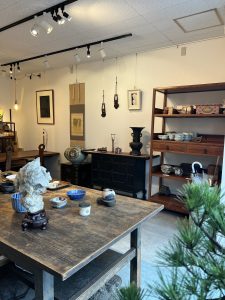
*****************
ご実家の整理やお片付けなどをされている方のご相談などが多くございます。
お片付けなどくれぐれもご無理のないようになさってくださいませ。
風光舎では古美術品や骨董品の他にも絵画や宝石、趣味のお品など様々なジャンルのものを買受しております。
お片付けをされていて、こういうものでもいいのかしらと迷われているものでも、どうぞお気軽にご相談下さいませ。
また風光舎は、出張買取も強化しております。ご近所はもちろん、愛知県内、岐阜県、三重県その他の県へも出張いたします。
まずは、お電話お待ちしております。
なお、毎月21日の持込鑑定会では無料鑑定・買取・持込など、ご予約なしで承っております。
ご近所の皆さま、ご遠方のみなさまも、お気軽にお越しくださいませ。
愛知県名古屋市千種区姫池通
骨董 買取【古美術 風光舎 名古屋店】
TEL052(734)8444
10:00-18:00 OPEN
#出張買取#骨董#古美術#骨董品#絵画#版画#茶道具#刀剣#彫刻

